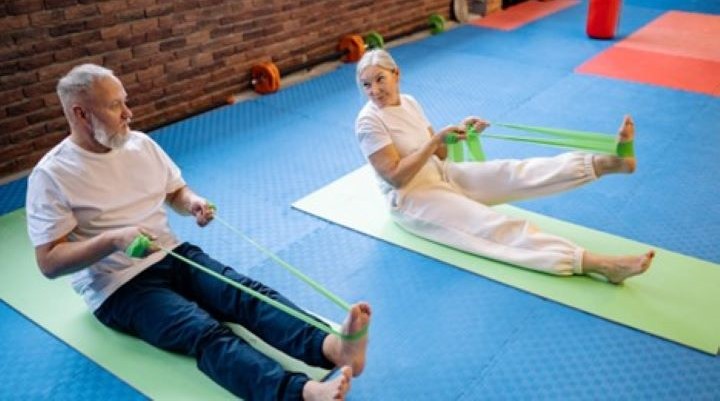
Fitness Over 50: Strategies for Staying Active as You Age
Incorporating fitness over 50 is one of the most effective ways to maintain your physical health, mental well-being, and overall quality of life. However, with age comes unique challenges such as reduced bone density, slower metabolism, and increased risk of injury.
The good news is that there are strategies tailored to meet the needs of individuals over 50, helping you stay fit, mobile, and energized.
Let’s explore these strategies for staying active as you age.
Strategies for Staying Active After 50
Regular physical activity has been shown to reduce the risk of chronic conditions such as heart disease, diabetes, and osteoporosis. According to a study, individuals over 50 who engage in regular exercise are 30% less likely to experience functional disabilities. Staying active also improves mental health, reducing the risk of depression and cognitive decline.
Here are some strategies for staying active after 50 that you can easily incorporate.
- Incorporate Strength Training
As we age, muscle mass naturally declines—a phenomenon known as sarcopenia. By age 50, adults lose approximately 1-2% of muscle mass annually.
Strength training, such as lifting weights or using resistance bands, is essential to combat this. Not only does it build muscle, but it also strengthens bones, reducing the risk of osteoporosis. Aim for at least two strength-training sessions per week focusing on major muscle groups.
- Prioritize Low-Impact Cardio
Cardio exercises improve heart health, enhance lung capacity, and boost endurance. For those over 50, low-impact options like walking, swimming, or cycling are ideal as they reduce stress on joints.
Research from the American Heart Association highlights that 150 minutes of moderate-intensity aerobic activity per week can significantly lower the risk of heart disease.
- Focus on Flexibility and Balance
Flexibility and balance exercises help prevent falls, a leading cause of injury among older adults. Activities like yoga, Pilates, or tai chi improve joint mobility and enhance stability. Even simple stretches or standing on one leg for a few seconds daily can make a difference over time.
- Stay Consistent with Daily Movement
Consistency is key when it comes to fitness at any age. Incorporating daily movement, such as gardening, housework, or walking the dog, keeps your body active without feeling like a workout. Using a fitness tracker can also help you monitor your daily steps and encourage more movement.
- Listen to Your Body
Your body’s recovery process changes with age, making rest days and adequate sleep vital for staying active. Pay attention to any discomfort or pain during exercise, and consult a healthcare professional if necessary. Modifying exercises to suit your capabilities is perfectly acceptable.
Conclusion
Exercise alone isn’t enough—nutrition plays a crucial role in supporting an active lifestyle. Ensure you’re consuming enough protein to promote muscle repair and calcium to maintain bone health. Staying hydrated is equally important, as older adults are more susceptible to dehydration.
Strategies for staying active after 50 as you age requires a blend of strength, endurance, flexibility, and mindfulness. By incorporating these strategies, you can enjoy a healthier, more vibrant life.
Remember, it’s never too late to start—every step counts toward a stronger future!